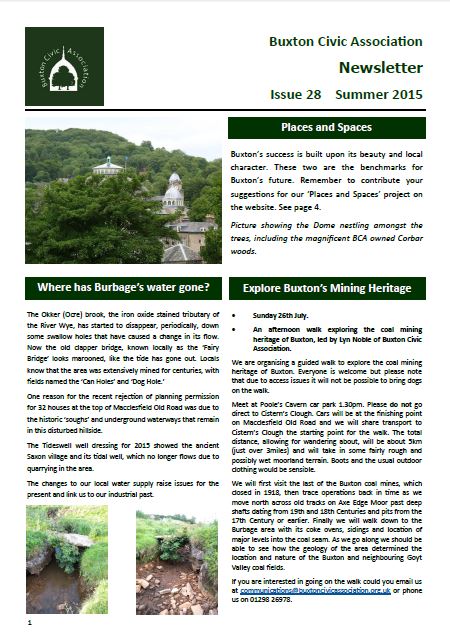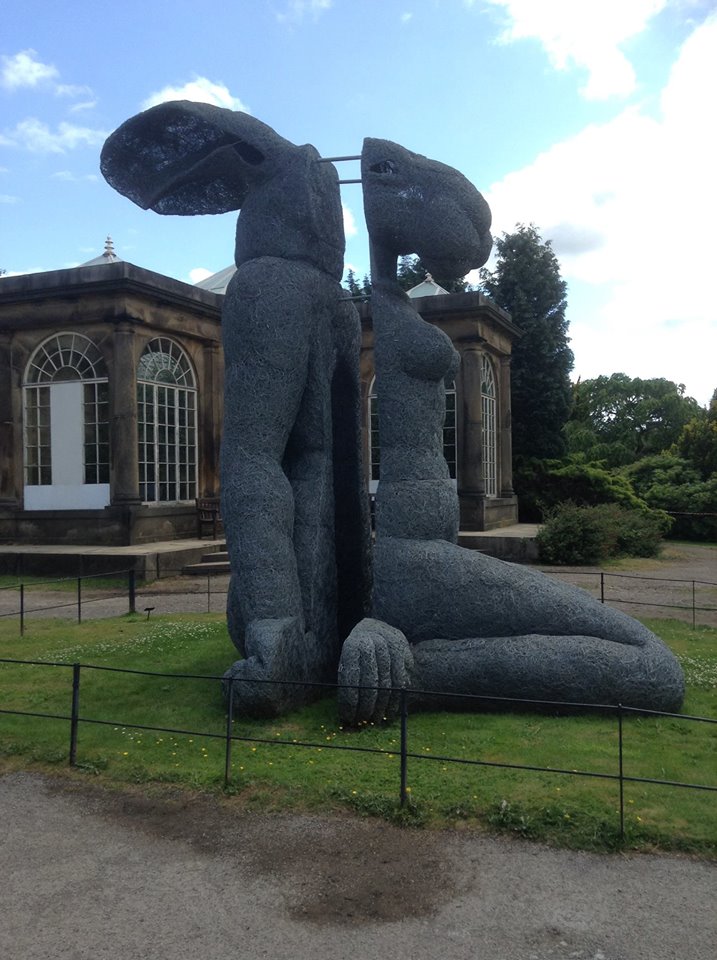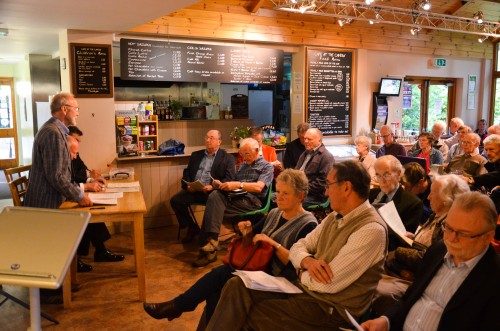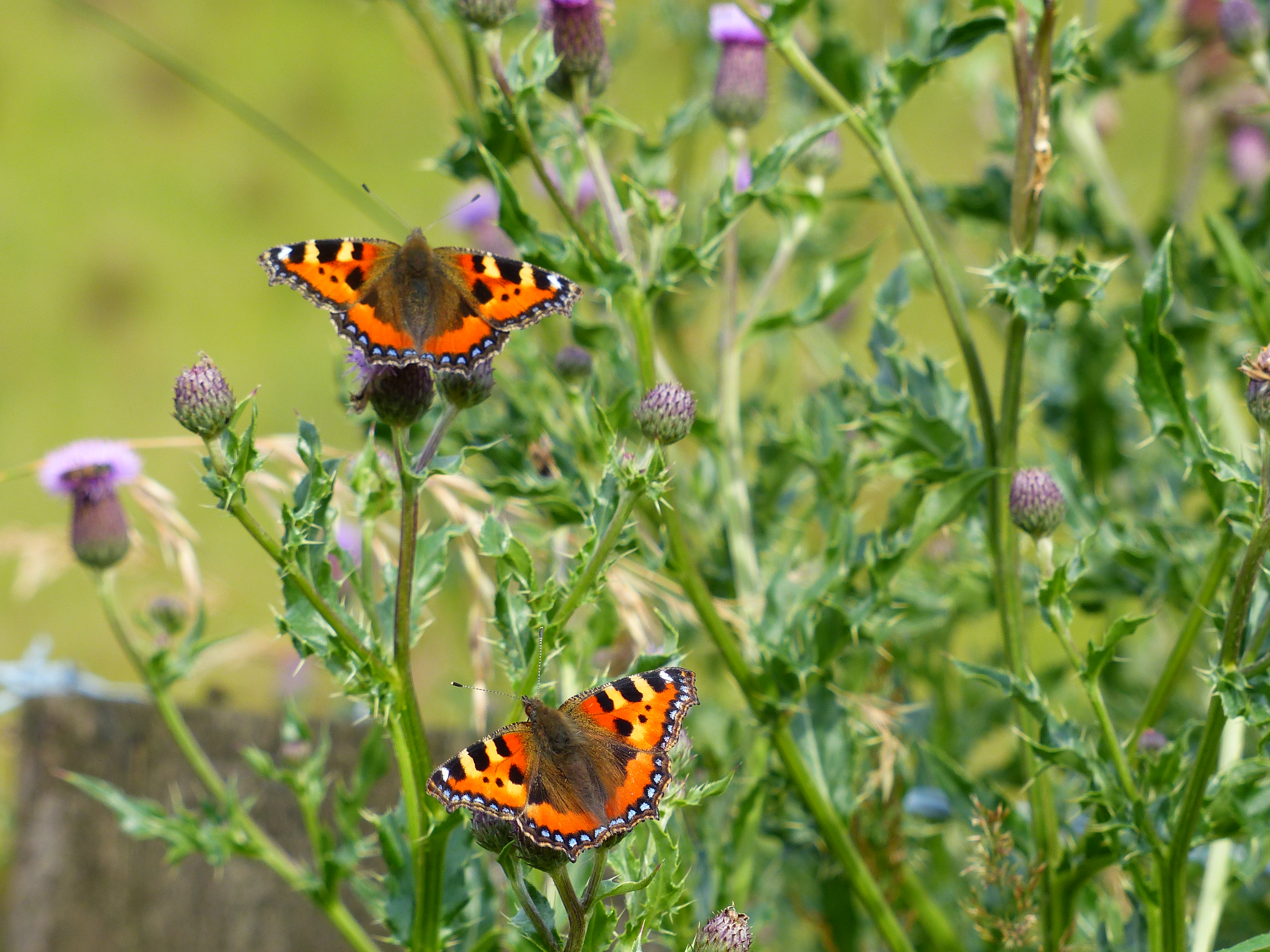
Newsletter Issue 28 Summer 2015
The summer edition of our newsletter is out now. It can be downloaded following the links below.

Newsletter Issue 28 Summer 2015
The summer edition of our newsletter is out now. It can be downloaded following the links below.

Sophie Ryder - Sitting 2006 YSP Photo by Louise Pisano
It was damp drizzly morning when we all gathered for our trip to the Yorkshire Sculpture Park. We started to worry a bit when 8.30 came and the coach didn't. Fortunately, Simon was able to open the cafe so at least we were not waiting in the rain.
Eventually, the coach arrived and we set off for Wakefield and in an hour and half we arrived at the Park and into sunshine. Our guide John met us in reception and we elected to do the ninety minute tour. It is a wonderful park and as John explained the illusion of rolling country side was maintained by the clever use of hedges and ha-has.
There were many interesting sculptures to be seen around the grounds of the park. They have only a temporary residency of approximately two years before they move on and make way for a new batch.
There was a very interesting set by Barbara Hepworth and one of our party was very excited to see works by Elizabeth Frink.
The time went all too quickly and it wasn't long before we were boarding our coach for the twenty minute trip to the Hepworth Gallery.
Rachel met us in Reception and her five years with the gallery was evident in the breadth of knowledge. She had a wealth of information about the artist and the other exhibits. The gallery is mainly dedicated to Hepworth’s last decade of work but it is a dynamic exhibition and preparations were under way for a new exhibition by Sir Anthony Caro.
All too soon it was, again, time to leave. A fascinating and thought provoking day.
Words by Steve Orridge
Photos by Louise Pisano

Inside the Hepworth Gallery

Members listening to the Chair's report at their 46th AGM
Poole’s Cavern visitor centre was packed for Buxton Civic Association’s 46th AGM. Mike Monaghan in his first address as Chair of the Association welcomed members to the meeting and described how the next few years could be the most exciting in BCA’s history. Building on the strong foundations that had been laid down over the past ten years, Mike explained that the Association was now able to focus on using its wealth of experience and knowledge in reaching out to other Buxton organisations and developing influential partnerships to help shape the future of the town.

Mike Monaghan addressing Buxton Civic Association AGM
Paying tribute to the board and to the staff, Mike said that the strong business model that Poole’s Cavern provided enabled BCA to manage and constantly improve its extensive estate of woodlands, and to provide support to other like-minded organisations in the town.
Peter Philipson, Director with responsibilities for the Woods gave a presentation on the work of the Wood Watch committee and explained in detail the work that had been done earlier in the year to create a woodland ride. Supported by RSPB and a grant from the Forestry Commission he explained that this work would complement the glades, which gave Grin Wood its SSSI status.
Considerable investment had also been made in improving some 1.5km of paths in Grin Woods and also in Corbar where the final link in the Ring of Trees walk had been completed. This would not have been possible with out the generous donations of materials from Lafarge Tarmac and support with transport from Lomas Distribution.
Simon Fussell talked about the Environmental Quality Mark that the Association had been awarded for a second year, and explained how the EQM supported the board’s objective in providing an environmentally sustainable business model. It provided a benchmark against which decisions could be made to ensure that the environment was always put at the forefront. The Association was also pleased to be able to support the work that Derbyshire Wildlife Trust was doing to vaccinate badgers in the area from Bovine Tb.
Brian Shawcross, Finance Director, reported another successful year. We increased visitor numbers, controlled costs and generated a healthy surplus on a turnover of over £0.5 million which will allow us to plan for future improvements.
Mike thanked the two retiring director’s, Tim Middleton and Owen Longden for their hard work and support and welcomed Nigel Manning to the board.
It had been decided at the last AGM that major planning issues would be opened up to the membership and it was encouraging that so many members attended the meeting to discuss the Nestle Station road proposal and made their feelings about the scheme clear by voting unanimously to reject it. BCA needs to continue to be vigilant on the planning front and the strengthening of the planning group was to be welcomed, with the addition of Derek Bodey and John Anfield as consultants.
Mike thanked the Association’s staff, the directors, volunteers and other committee members, and everyone else who had supported the Association.
Following the formal business of the AGM, Mike Wilde (Chair of the Membership and Communities Group) and Simon Fussell (Business Development Manager) gave an interesting and stimulating presentation on the recent project “Places and Spaces – telling the story of Buxton.”




Buxton Civic Association held its 46th AGM on 22nd June at the Poole's Cavern visitor centre. We have posted a few photographs from the evening and a full report will follow later. The minutes from the AGM and copies of the Chair's, Woodland, and Environmental report will also be made available to members.


Mike Wilde (Chair of Membership and Communities Committee) Alan Roberts and Simon Fussell took a display of our latest projects into Town on 20th June as part of the Nationwide Civic Day celebrations.
The display generated a lot of interest, especially the Spring Garden canopies project. You can get an update on our projects by downloading our June Newsletter. See Link below.

The first half of the butterfly recording season has been completed and Steve Orridge has sent us his interim report. (See below) The unsettled weather has meant that very few Butterflies have been recorded, but with the forecast for July showing signs of warmer settled weather, Steve is hopeful that numbers will improve.
If you are interested in taking part in the survey contact us at communications@buxtoncivicassociation.org.uk.
The full report can be read below.

Vision Buxton Summer Social - Thursday 2nd July
On Thursday 2nd July, Vision Buxton is holding it's biggest ever Summer Social Event at the Devonshire Dome, Buxton. At only £10 a head - and being generously hosted and subsidised by Vision Buxton sponsors the University of Derby - the event promises to be a great night. With catering students showcasing their culinary talents, and capacity for up to 80 guests, there is plenty of space to invite partners and work colleagues. Members of Buxton Civic Association are very welcome to attend!
The event runs from 6.30pm to 9.30pm with a buffet and a cash bar.
To make sure you have a place, please send or hand deliver your £10 per person to Pricketts Solicitors,
Please label envelope Summer Social, FAO Administrator, Vision Buxton and mark clearly your name and e-mail address so you will receive confirmation of your place.
Cheques payable to Vision Buxton.
Hurry and book your place!! Closing date for reserving a place is Monday 22 June.
Full address is;
Vision Buxton
c/o Pricketts
12 Hardwick Street
Buxton
Derbyshire
SK17 6BN
Do contact Maggie Reynolds at administrator@visionbuxton.co.uk if you need any more information